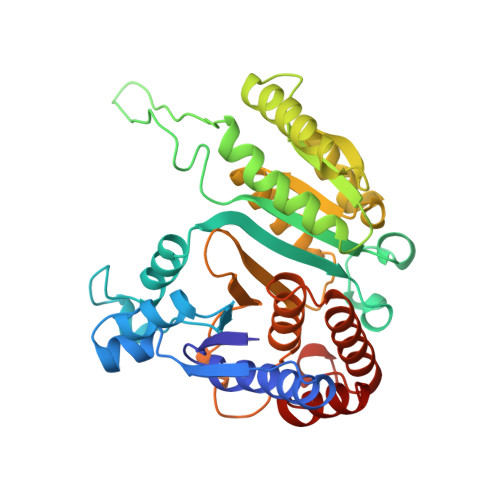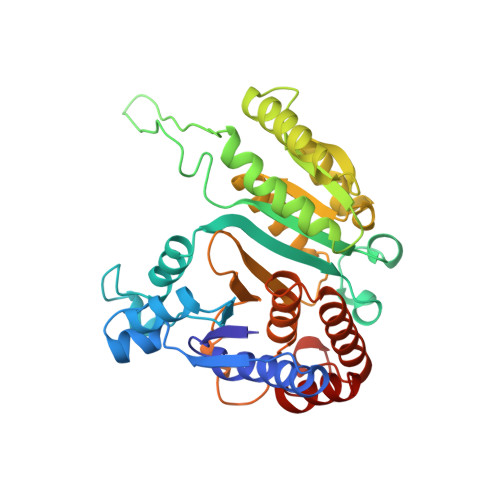Cryocrystallography of 3-Isopropylmalate dehydrogenase from Thermus thermophilus and its chimeric enzyme.
Nagata, C., Moriyama, H., Tanaka, N., Nakasako, M., Yamamoto, M., Ueki, T., Oshima, T.(1996) Acta Crystallogr D Biol Crystallogr 52: 623-630
- PubMed: 15299625
- DOI: https://doi.org/10.1107/S0907444995016623
- Primary Citation of Related Structures:
1XAA, 1XAB, 1XAC, 1XAD - PubMed Abstract:
The crystal structures of thermostable enzyme, 3-isopropylmalate dehydrogenase of Thermus thermophilus (10T) and a chimeric enzyme between T. thermophilus and Bacillus subtilus with one point mutation (cS82R), were determined at both 100 and 150 K. At the cryogenic condition, the volume of the unit cell decreased by 5% as a result of a contraction in the solvent region. Although the overall structures of both enzymes at low temperature were the same as that of 10T at room temperature, interactions between two domains and between two subunits in a functional dimer of cS82R were significantly altered. The decrease in the average temperature factor of 10T at low temperature and no significant decrease for cS82R suggested that the structure of the engineered enzyme (cS82R) may have many conformational substates even at low temperature, while the native enzyme (10T) at low temperature has a more definite conformation than that at room temperature. The location of water molecules around the enzyme molecule and the calculation of the radii of gyration suggested that cS82R had a weaker hydration than 10T.
Organizational Affiliation:
Department of Life Sciences, Faculty of Bioscience and Biotechnology, Tokyo Institute of Technology, Yokohama, Kanagawa, Japan.


















